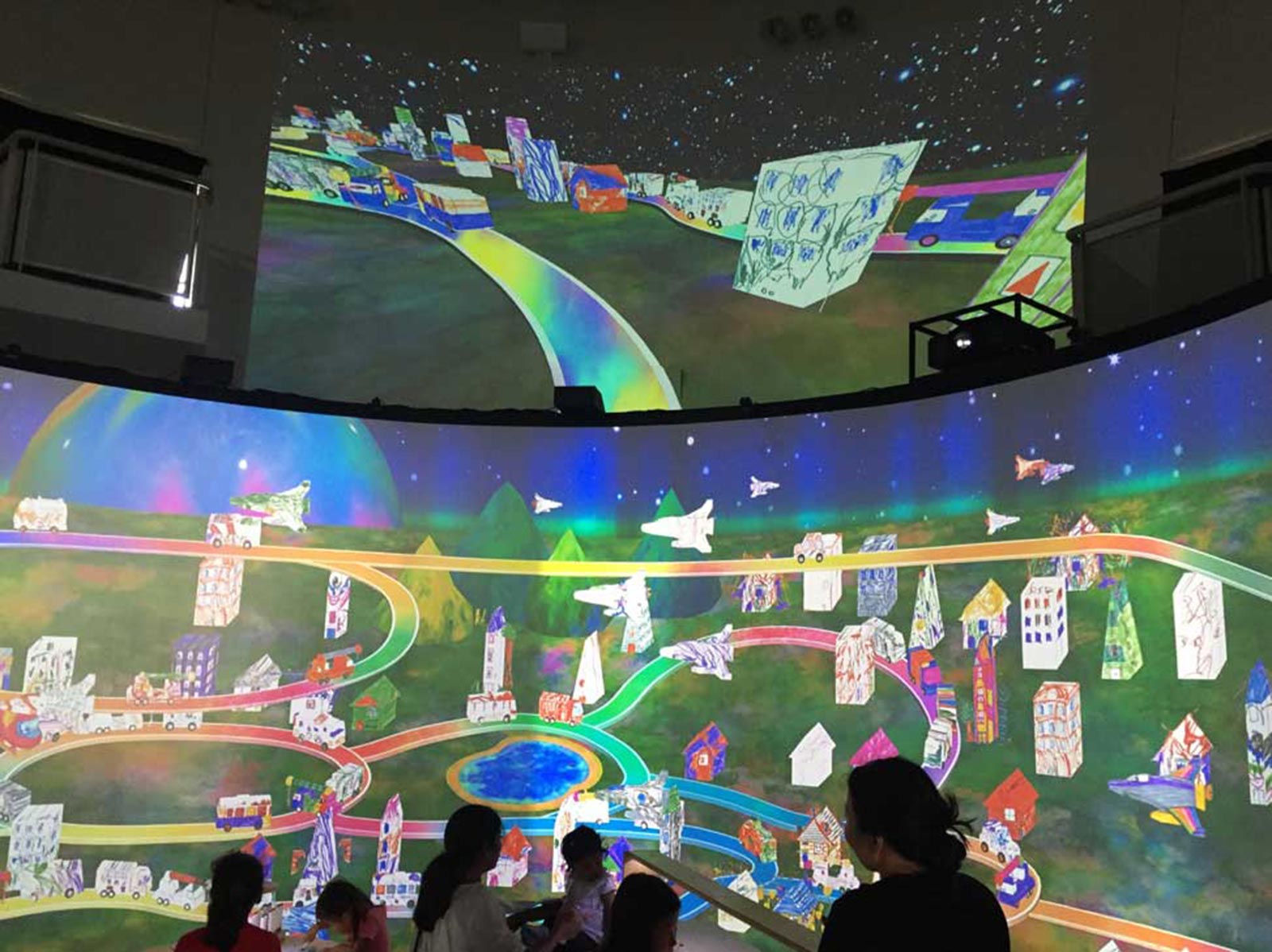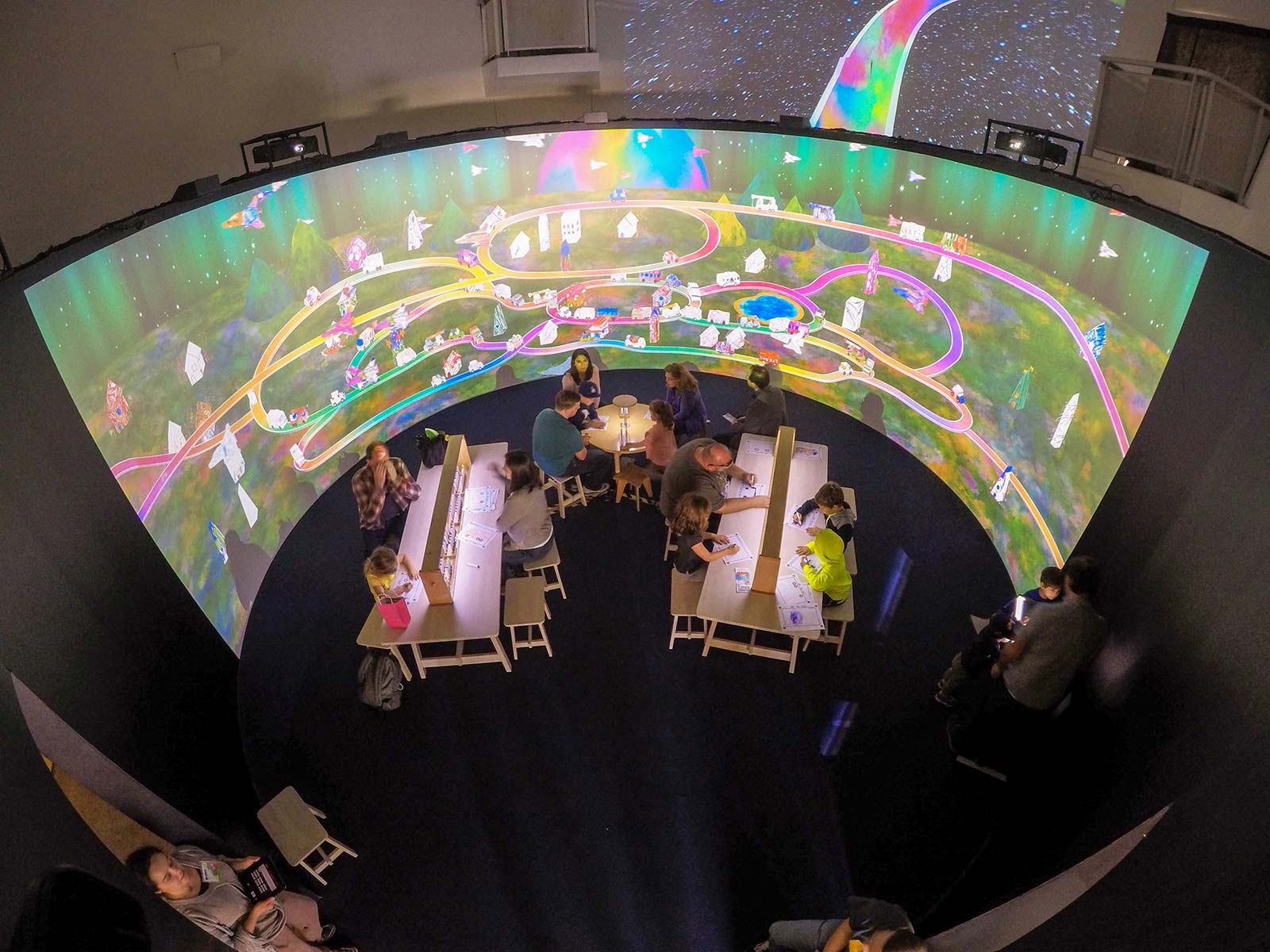Investigating Smart Museum Exhibits
Students spend more waking hours outside of school than in school. It’s no wonder that learning takes place not just in classrooms, but in different informal learning settings at home, around town, and in other community spaces. Technologies are also all around us. Our Learning Everywhere initiative aims to explore ways to bridge, extend, and connect school learning to other learning experiences across settings, using the best features of technology.
We are partnering with museums to understand how to transform exhibits into both learning amplifiers for visitors and data collectors for learning researchers. Ubiquitous computing technologies embedded in hands-on interactions and physical spaces offer opportunities for learning—and for learning about learning. A “smart” museum or exhibit can collect data about its visitors for institutional purposes and to benefit the users’ own learning by engaging them in experimentation, dialogue, and reflection.
Using wireless networks, data analytic tools, and artificial intelligence, smart museums leverage the actions and movements of users that trigger sensors, switches, and touchscreen devices to track and gather user or customer insights. Digital data can be collected from visitors using cameras, barcodes, eye tracking, RFID, and mobile devices. These cyber-enabled technologies capture data about visitor location, body positions, game play, and exhibit preferences.
For example, wearables like tracking devices and personal mobile phones can monitor user location and gross body movement, while beacons, transmitters, and tags monitor a user’s position and path within the museum. These technologies vary in their robustness and accuracy with respect to documenting visitor activity, as well as in their inconvenience, expense, and disruption to the learning experience. Less intrusive methods embed sensors and tracking into exhibit spaces to gather digital data in the background without interrupting the flow of visitor activity.
Sketch Town case study
With the Children’s Creativity Museum in San Francisco, we are studying how technology can help facilitate and document the ways families contribute to their children’s learning. We collected baseline information from an existing media exhibit called Sketch Town using monitoring techniques. Sketch Town uses art and technology to inspire family conversations about being part of vibrant urban communities.
As they enter the Sketch Town gallery space, families sit together at a table and draw on paper templates marked with a machine-readable code. They can color in an existing shape (e.g., a bus, building, or rocket), or make their own sketch. After completing a drawing, the user digitizes it on a nearby tabletop scanner. The drawing then appears on a large wall display along with other user-contributed, interactive images (Figure 1). For instance, if the image is a car, it moves along the roads in a large city landscape scene. Visitors can touch the wall to make sketched objects behave in different ways, such as making a house jump and play chimes.

To test different methods for capturing visitor interactions, we tracked how families used the exhibit over multiple sessions. (A sign was placed at the entrance to Sketch Town, using an implied consent approach to notify visitors that they were being photographed with an overhead camera. Visitors were not personally identifiable on the photographs.) We used both traditional human-led data gathering techniques (including observational ethograms, scan sampling, and surveys), as well as common technology-based monitoring strategies (Figure 2). For example, to look at raw usage data, we used interaction log files from the exhibit, along with a time-lapse digital camera mounted near the exhibit to take periodic snapshots. We also counted the number of paper sheets used by visitors in a given day, plus date and time stamps from the computer’s digital scanner, to track how many images were created. Finally, we held brief interviews with parents and caregivers.

captured from a time-lapse camera used to track visitors.
Results
Sixty families offered to share their feedback with researchers. We asked parents about their family’s experience using Sketch Town and what they thought their children were learning at the exhibit. Their responses ranged from learning about technology and “getting a sense of how scanning works and how physical objects become digital” to art appreciation. One father remarked that the exhibit was teaching his daughter “how to appreciate her art and her friend’s art” as the work was posted to the gallery wall. Another family mentioned that Sketch Town was teaching their children the important science concept of “cause and effect” as they interacted with their digital wall drawings.
When asked if they wanted the museum to send the digital recording of their child’s work, about half of the parent groups felt this could be a useful feature, allowing them to focus more on their child while at the museum. Parents suggested that the digital artifacts could be shared with other family members or used to prompt further reflection about the museum visit.
We also surveyed the feelings families had about being recorded by a “smart” exhibit. A majority (just over 60%) agreed to the general use of recording visitors to improve the experience. And almost 90% of the parents did not have privacy concerns about such museum research. Because of the deep trust that has been established over time between visitors and the Children’s Creativity Museum, they were willing to provide data to help improve the exhibit learning experience.
Opportunities and challenges
In museums that serve young children and families, all program studios, theaters, and galleries are highly regarded as secure public spaces in which to learn and explore, safeguarded by museum staff and the institution’s researchers. Strict design requirements ensure that the parent-child interactions as well as family learning spaces are preserved, maintained, and respected. Thus, methods for collecting smart museum data pose both a human-centered design opportunity and a serious challenge.
Our goal is to investigate what kinds of information can be inferred from digital data captured from users’ interactions with an exhibit, as well as from their interactions with each other, that do not require the use of visitor-worn beacons or other wearables. (With technologies like card readers that trigger an exhibit response, visitors choose when they want to be recorded.) Less visible embedded technologies rely on strong trust between the public and the museum, and collect data using methods of implied consent.
In our exploratory study, the data gathered from Sketch Town gave us insights into the complex socio-technical issues of smart exhibit methods. Research from this study could inform other exhibit developers who are contemplating whether to incorporate user tracking data that assists informal educators, teachers, and visitors to better understand how to support users in real time or to enhance their later out-of-museum learning.
We are continuing to explore different ways a museum exhibit can enhance a visitor’s experience while also helping to gather useful information for museums. We also want to improve upon a user data model developed from unobtrusive, yet transparent collection of data. If exhibit interactions are designed to encourage visitors to reflect on their own learning and parents to record their children’s learning, digital tracking and documentation functions may become learning amplification tools.
Sherry Hsi (shsi@concord.org) is Executive Vice President of the Concord Consortium.
This material is based upon work supported by the William K. Bowes, Jr. Foundation. Any opinions, findings, and conclusions or recommendations expressed in this material are those of the author(s) and do not necessarily reflect the views of the National Science Foundation.

